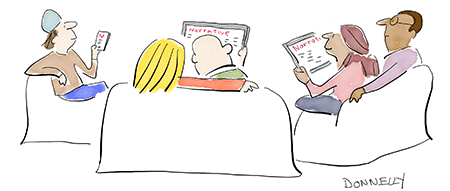Does this always work out in a glow of amity and constructive engagement? Certainly not, no more frequently than do love affairs. Overbearing, insensitive editors and mulish, unlistening authors, whether singly or in pairs, have caused many a shift of contract and failed book. Both species eventually tend to meet comeuppance and run out of partners.
—Alan D. Williams, “What Is an Editor?” in Editors on Editing
Copying out those words for the epigraph above, I appreciated Alan Williams anew, with the added refinement that time can bring. The paragraphs above are so like him, so like his editing notes and his style of editing a manuscript. Everything is there, only he’s not going to hit you over the head with it. Read his assessment, read it again, “think further,” and you begin to extract its full wisdom and bite. It’s fitting that he can still bestow his editing gifts on me from the grave: in this instance giving me the image of a dance partnership for the relationship between an author and her editors.
On a publishing dance card, my partners would appear in this order:
1. David Segal
2. Robert Gottlieb
3. Alan Williams
4. Harvey Ginsberg
5. Linda Grey
6. Jennifer Hershey
7. Nancy Miller
8. Jennifer Hershey
9. Nancy Miller
My first partner, David Segal, died before our dance ever got into full swing. In May 1970 David saw The Perfectionists through publication at Harper & Row. When he contracted for that novel, he had offered to guide me through the rest of the manuscript or let me find my own way, and I chose to go it alone. When he received the finished manuscript he mailed me his notes, including a major suggestion that I resisted. But at the last moment, he and my agent, John Hawkins, talked me out of murdering a character on the last page. (It was the right decision.) David then moved to Knopf as a senior fiction editor and we signed a contract for a second novel, The Angel Keeper, about a young American woman putting off her American marriage and getting caught up in the sinister goings-on in the household of her London employer, an Anglican priest, and his mad sister and a manipulative housekeeper. (“David has flipped over The Angel Keeper,” reported Hawkins.) However, David had some suggestions and qualms about the setup of this novel: How was I going to sustain the American side, which, so far, by page 90, wasn’t as interesting as the English side? We had made a date to discuss this over a long lunch on December 28, when, armed with my brand-new PhD, I would be in New York applying for teaching jobs at the Modern Language Association convention.



